The Nintendo PlayStation

Ultimately, it was really Nintendo that was responsible for the Sony PlayStation being created. Back in the 16-bit era, when the Super Nintendo and Sega Genesis were the dominant systems, Sega created a CD add-on peripheral pretty early in the life of the Genesis. Nintendo threatened their own CD add-on but it never saw the light of day. Nintendo partnered with Sony and Phillips at different times to develop this CD add-on but I guess they were never happy the results because the idea was ultimately shelved. Sony, a little upset at having put significant work into a system that wasn't going to get released, decided to go it alone and release their own standalone system. That would be the Sony PlayStation.
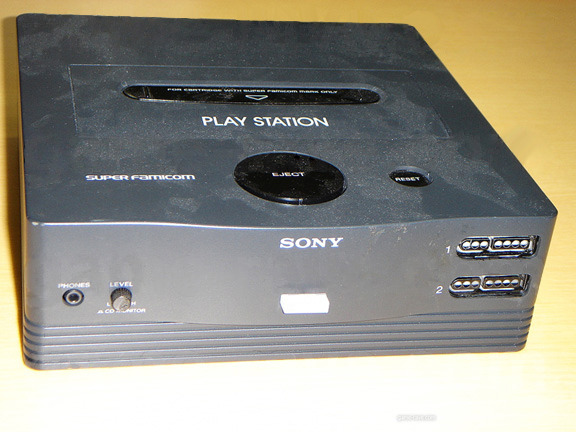
Sony had legitimate reasons to be upset. They announced the PlayStation at the June 1991 CES. The following day, Nintendo announced its partnership with Phillips. On the other hand, Nintendo was upset by Sony's attempt at wrangling software licensing away from Nintendo by using a special CD-ROM format that was exclusively owned by Sony. Prototypes continued to be developed and Nintendo and Sony tried to work out their differences through 1992 when Nintendo and Sony reached a deal in which Sony could release SNES compatible hardware. However, the following year, Sony dropped development of the Super Nintendo CD-ROM and devoted its efforts to its own standalone PlayStation.

At the time, I regularly bought issues of Electronic Gaming Monthly and it seemed like every couple of months they had some new news item or preview of the latest iteration of this supposed CD-ROM add-on. One issue went so far as to publish the "final" specs. I had a Super Nintendo and was very interested in this magical super gaming device that was supposed to cost less than $200 and add additional superpowers to the Super Nintendo.
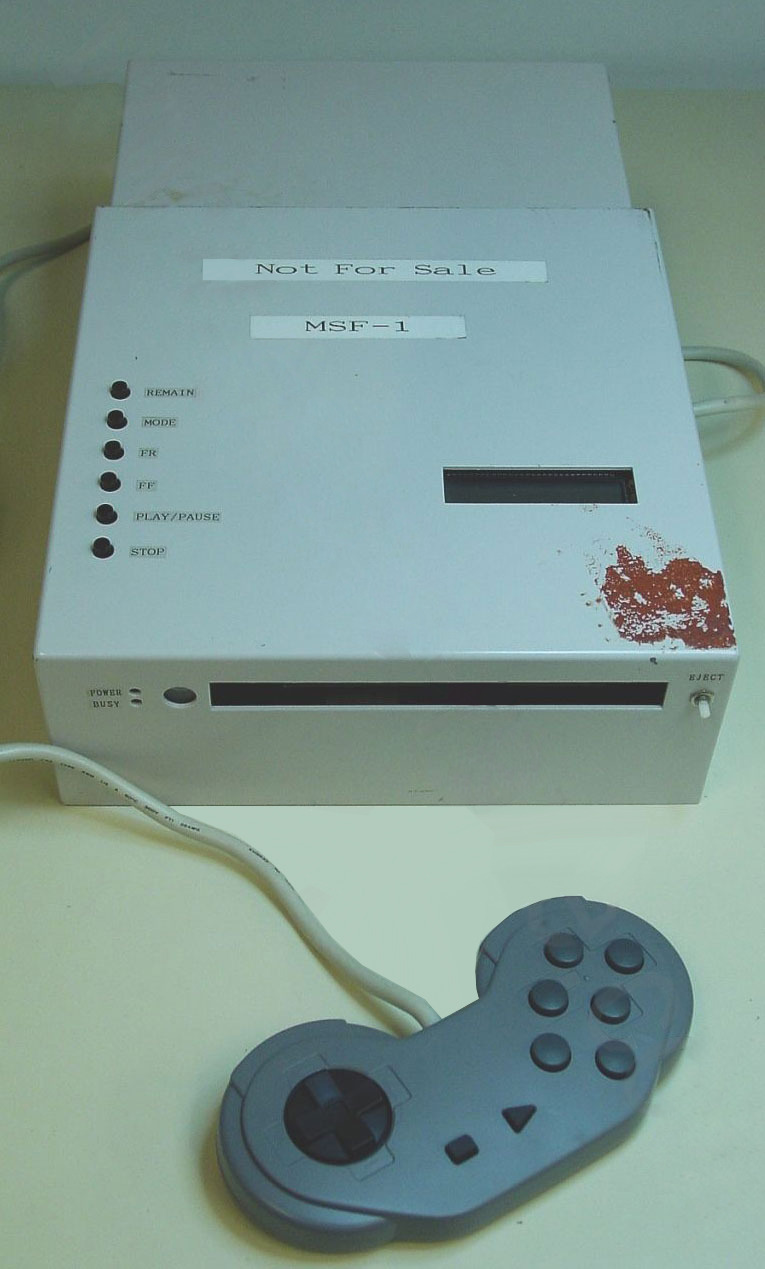
In June 1992, EGM offered a "First Look" at the new Super Nintendo CD-ROM with schematic. In included impressive features such as a 21 MHz "SCCP" co-processor and a total of 8 Megabits of additional RAM. That's an addition 1 Megabyte which was pretty impressive for the time. Best of all, this wonder machine was supposed to clock in at under $200.
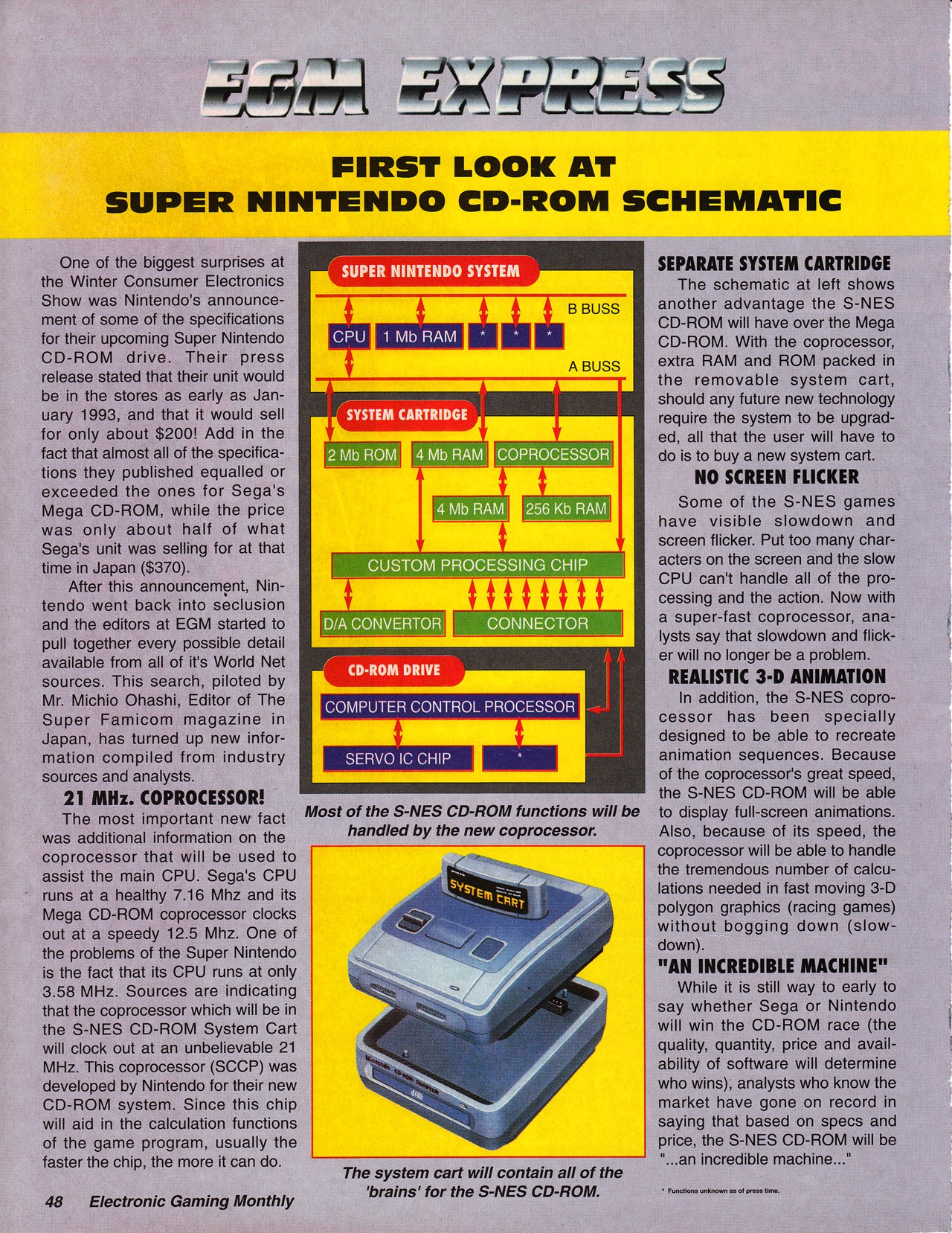
In the November 1992 issue of EGM, there was a news blurb about how Nintendo was abandoning their current design in favor of a new CD-ROM add-on that would have a 32-bit co-processor and that it could be in production as early as August 1993.
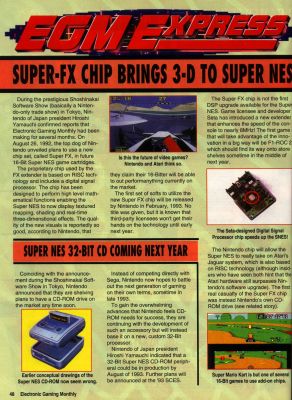
Finally, in the March 1993 issue of EGM, what were supposedly the "production" specs of the CD-ROM add-on were published. Specs included the following:
- Main Memory
- D-RAM: 8 Mbits
- PS-RAM: 1 Mbit
- Supplemental Memory
- D-RAM: 4 Mbits
- System ROM: 2 Mbits
- Co-Processor (SCCP)
- Type: 32-Bit RISC
- Clock Speed: 21.477 MHz
- Cache: 8 Kbit
- CD-ROM Decoder (HANDS)
- Type: 65C02
- Clock Speed: 4.295 MHz
- CD-ROM Drive
- Standard Access Time: 0.7 Sec.
- Max. Access Time: 1.4 Sec.
- Data Output Speed (Norm): 150 KBytes/sec
- Data Output Speed (2x): 300 KBytes/sec
These specs look quite similar to what had been published months before but with some more detail. But as we all know, this never saw the light of day.
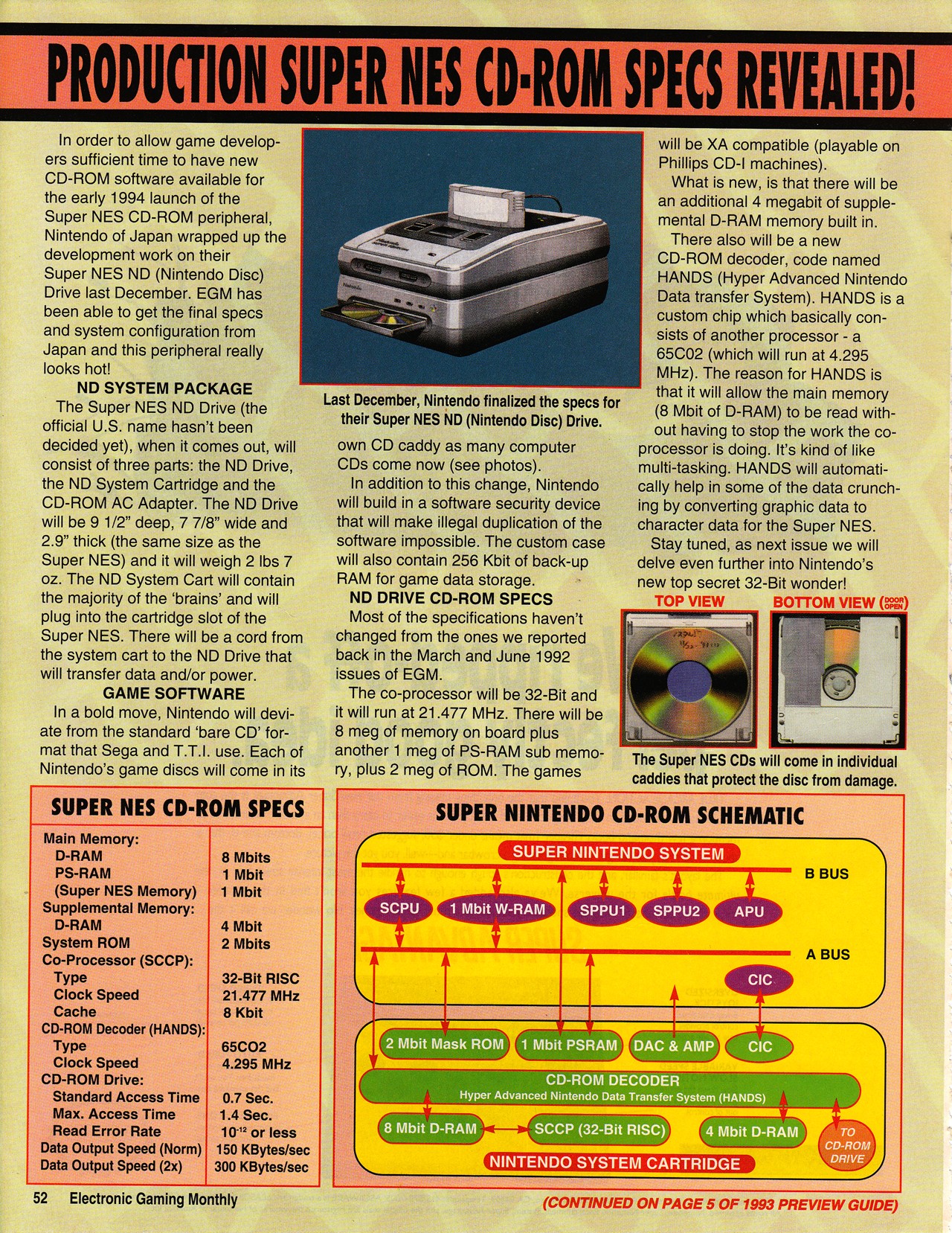
Unfortunately, stories of the upcoming SNES CD-ROM add-on faded away in favor of a new ultra 64-bit system that would become the Nintendo 64. Ironically, the next system I owned after the SNES was the PlayStation. Nintendo really shot themselves in the foot by creating a competitor that would come close to crushing them. Or maybe it was all part of their plan to get rid of Sega as a hardware manufacturer.
There were a number of prototypes developed of this Super NES/CD-ROM combo and supposedly there were up to 200-300 working models at one point. Most were destroyed and as far as the world knows today, there is only one working model (see the first photo). It was in a box of junk owned by the former CEO of Sony and it sold at auction about a year ago for $360,000.
Had the SNES CD-ROM been released, The Secret of Mana would have been one of the launch titles. Instead, it was cut down so that it could fit on a cartridge. It was still an excellent game so we can only imagine how much better it might have been.
Read more: https://www.megalextoria.com/wordpress/index.php/2021/05/12/the-nintendo-play-station/
I didn't even know this existed...
I have always wondered what the gaming industry would have been like with Sony and Nintendo partnering up.
I think it would have made console wars none existing and would have let Sega thrive.
It would have been interesting for sure. But I think Sony was too big to be willing to let Nintendo take the lead and Nintendo was never going to give up complete control of their game system. My ideal video game landscape would be Nintendo vs. Sega vs. Atari but I'm just nostalgic that way. Sony and Microsoft are still the new kids on the block to me.
I agree, nintendo will never hadn over it's system or mario for that fact. I think sega could make a come back if they wanted but they would have to do something NEW but that failed for the dreamcast
Ironically, the Dreamcast was my favorite Sega system and the only Sega system I had when it was new. It just came out at an awkward time because of the early failure of the Saturn. I thought it was a nice system but lack of much 3rd party development really hurt it. That's the death knell for any system.
Agreed, I never owned one we had PS1 and N64 still but I think if they would have pushed it back to go with PS2 we may have seen a whole new console war
This gives me nostalgic memories. Great blog and it was an interesting read. The old tech indeed paved the way for what we have today, the pinnacle of technological advancements that we can ever imagine.